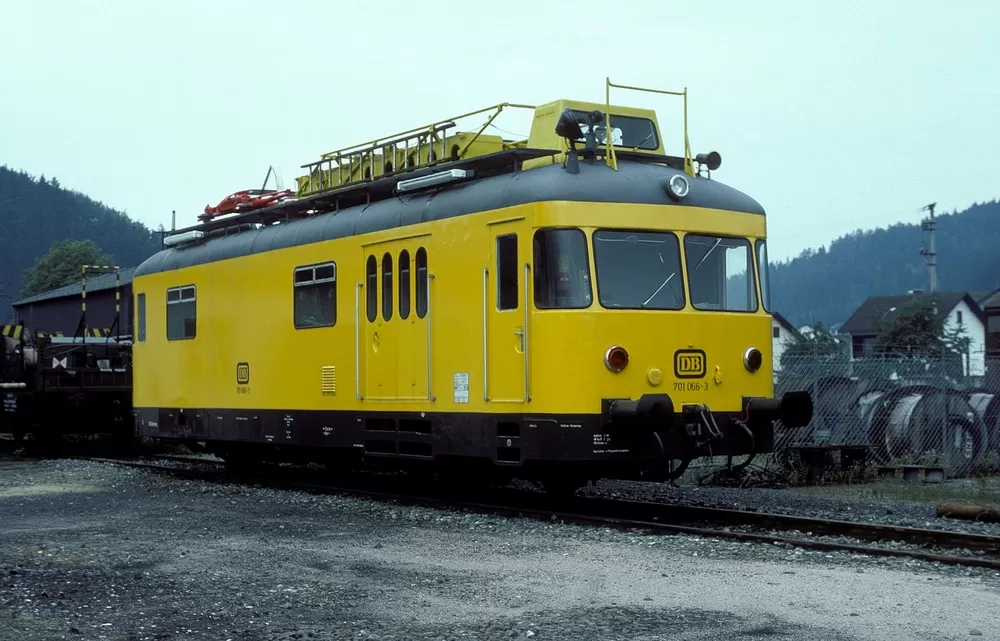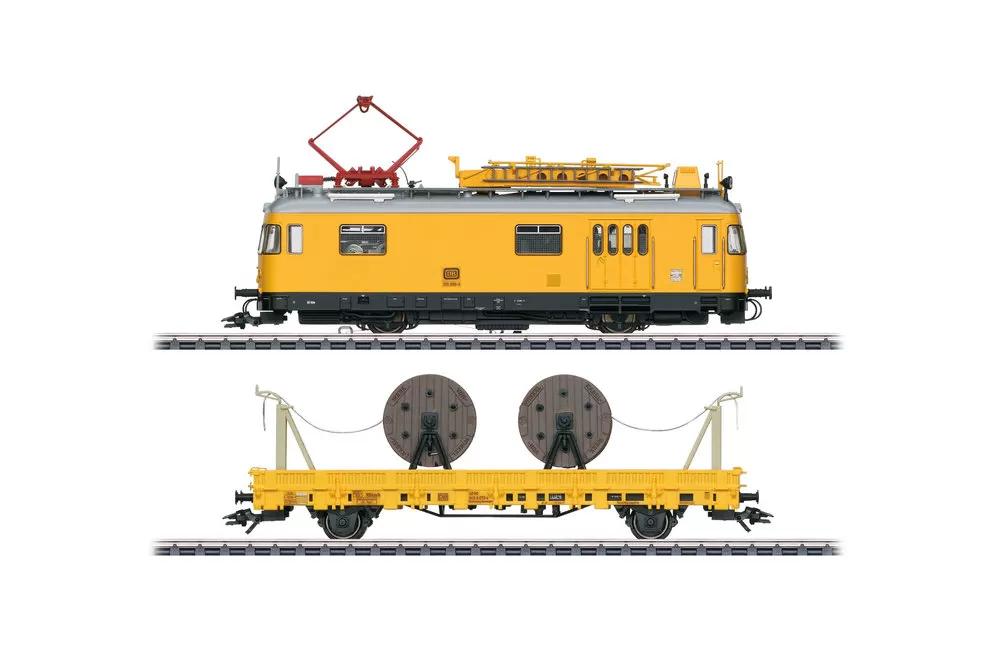
Source: flickr.com

Source: flickr.com
Also known as:
Vehicle type:
Registration country:
Railway companies:
1954
Starting in 1954, the firm Waggon- und Maschinenbau GmbH in Donauwörth (WMD), working in close cooperation with the German Federal Railroad's central office in Munich, develops the so-called standard powered catenary maintenance railcar or TVT (VT 55 / 93 and from 1968 onwards Class 701 / 702).
These units made wide use of design elements of the VT 98 rail busses.
Since electrical propulsion was out of the question, combustion motors are chosen. The 11x units from the first production series (001-010 and 024) are equipped with two Büssing type U9A motors, each developing 95.5 kilowatts / 128 horsepower. The following units are equipped with two water-cooled Büssing type U10 motors mounted below the floor and developing 221 kilowatts / 300 horsepower.
4x units (numbers 702 001 - 004) are initially delivered with one single engine. In 1972, these units receive a second engine and are reclassified as 701 122 & 042 - 044.
A special rpm speed regulator allowed a constant "crawling speed" of 5 km/h.
The railcars are equipped with a workshop between the two cabs (about 26 square meters) with the possibility to climb into the viewing cupola to observe the catenary. In addition, these units have a specially protected roof exit as well as a pantograph on the roof for grounding and testing. In the middle of the roof there is a platform (around 6 square meters in size) that can be raised up to one meter and turned from side to side. An extendable ladder on the platform can be used for work up to 15 meters. A speaker system is installed for communication between the cab, the lookout and the lifting platform.
The railcars also have compressed air disk brakes, cold water heating and two separate 12-volt power supply systems.
Originally, all railcars are painted red (RAL 3004).
Sources: https://www.maerklin.de/en/products/details/article/39973, https://www.drehscheibe-online.de/foren/read.php?17,5808549
1973
Sources: https://www.drehscheibe-online.de/foren/read.php?17,5808549
1974
- 124x dual-engine and 4x single-engine railcars delivered by Waggon- und Maschinenbau GmbH Donauwörth (WMD);
- 20x dual-engine railcars delivered by Messerschmitt-Bölkow-Blohm GmbH (MBB);
- 3x dual-engine railcars delivered by Rathgeber;
- 15x dual-engine railcars delivered by Uerdingen.
Sources: https://www.drehscheibe-online.de/foren/read.php?17,5808549
1975
Sources: https://www.maerklin.de/en/products/details/article/39973
2002
Some of the units converted to diagnostic railcars (Class 701 / 702 DVT) continue to be in service after 2013.
Numerous units are sold to private railroad companies and museums.
Sources: https://www.maerklin.de/en/products/details/article/39973, https://de.wikipedia.org/wiki/DB-Baureihe_701
Do you have additional informations regarding this vehicle?
Help us writing the history of Class 701 / 702 "TVT"! Your knowledge is precious for us and the entire community, do not hesitate to share your facts, photos or videos:
Latest update on the 26th of January 2020 at 22:19
Contributor(s): Tudor C.
Discussion forum



